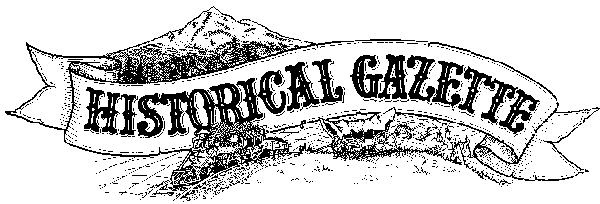Trains Roll Emigrants Westward
Volume Two Number Ten
Oregon Trail 1883
Henry Villard Something of the man who has given us railroad connection with the East Henry Villard was born in Speyer, Germany in 1835, the son of a Bavarian judge. He received a university education, and at the age of 18 came to America to make a career for himself. He studied law, but soon turned to the profession of journalist. At first he wrote for German-American papers, but found they offered only a limited field. He then set himself to work to master the English language. This task, always difficult for foreigners, he achieved so well that in 1858 he obtained an engagement to report the Lincoln-Douglas political campaign for a leading eastern journal.
For nearly a score of years he was an industrious and successful journalist. In 1859, he went to Colorado to write about the new gold discoveries. During the rebellion he saw hard and hazardous service in the field with both armies. After the war he did newspaper work in this country and Europe.
In 1874, the German bondholders of certain American railroad companies which had defaulted after the panic of 1873, sent him to the United States as their representative to report the conditions of the Kansas Pacific and the Oregon and California railroad. He returned to Europe, and was again sent to America and became president of the Oregon & California railroad and the Oregon Steamship Company in 1875. From 1876 to 1878 he was receiver of the Kansas Pacific.
In April 1879, Villard began the construction of a system of railroads to occupy the valley of the Columbia river and the new wheat and pasture country east of the Cascade mountains. This enterprise was remarkably successful, and Villard conceived the masterly plan of joining the transportation lines thus established to the transcontinental trunk road of the Northern Pacific under a common management.
To carry out this plan, he formed in 1881 what was known in Wall Street as the "blind pool." About ten millions of money were placed in his hands by leading bankers and other capitalists without his giving them definite information as to the use he might he make of it. He gave them, at the time, only his personal receipt without security. With this money and with his own means he quietly bought a controlling interest in Northern Pacific stock. In the fall of 1880 he was chosen president of the company. Villard has energetically moved forward to completion his entire system of roads. This important national highway has now been completed. ~ The above sketch is substantially from Frank Leslie's Illustrated Newspaper, extracted from the Oregonian by the editor.
This story is from the front page of our edition. Other stories included in the hard copy are Pioneers First in the Parade, From Last Spike to Portland and a story about the final connection by rail between Puget Sound and St. Paul, Minnesota. A minature replica of a Condensed Time Card cover for the Northern Pacific Railroad plus a photo of Henry Villard and his colleagues adorn the front page. Finally Portland has a rail terminus and a beautiful one it is! Imagined and realized by Villard as a hub for the region. It appears that Villard may should have a greater place in the history and minds of Portlanders than he does. From the stories in this edition it seems that Portland learned at this time how much fun could be had by having parades downtown and how to organize big citywide parties. Little children at this time would definitely be ready for the all out fun Portland would have giving it's two year party out on Guild's Lake with the Lewis and Clark Exposition in 1905. Too bad that Lake was soon enough filled in and used as an industrial area in North Portland. Only a few remanents of that Exposition remain around town. If we only had a time machine to check out our history facts in person! For sure, Portland still loves a parade and holds several parades every year during the last of May and the first of June. We call it Rose Festival.
Continue the Oregon Trail saga! Read our Volume Four, Number Three Oregon Trail 1840-1995 End of the Trail, Oregon City

Bridget E. Smith, editor & publisher
Email | Home Page | Historic Headlines
Historical Gazette
Published in Portland, Oregon
© 1991-


